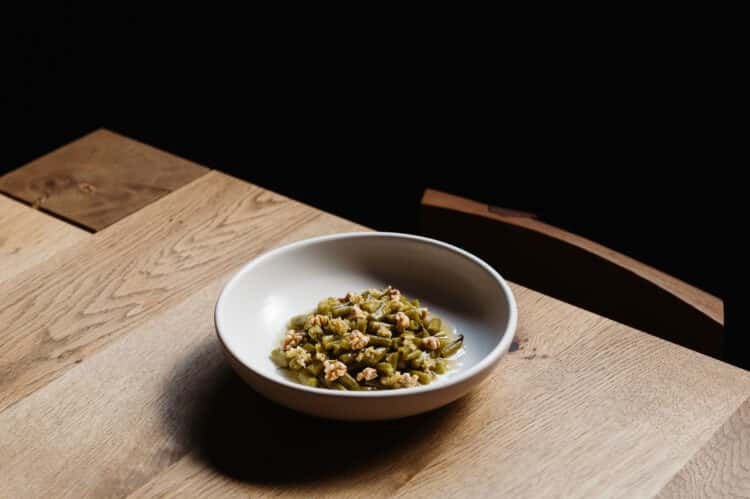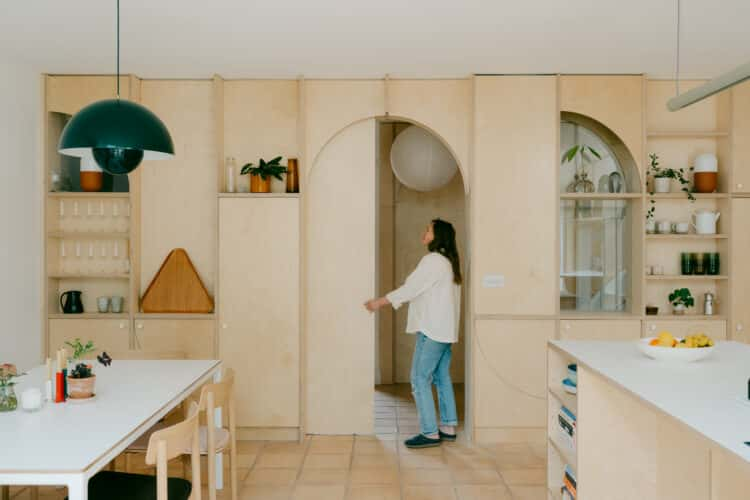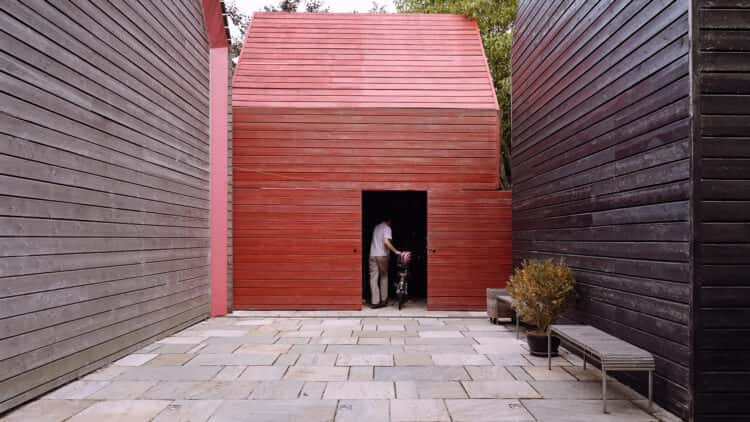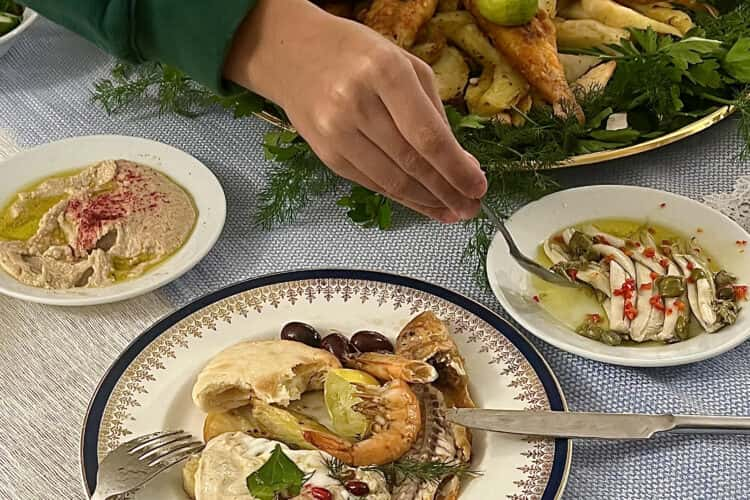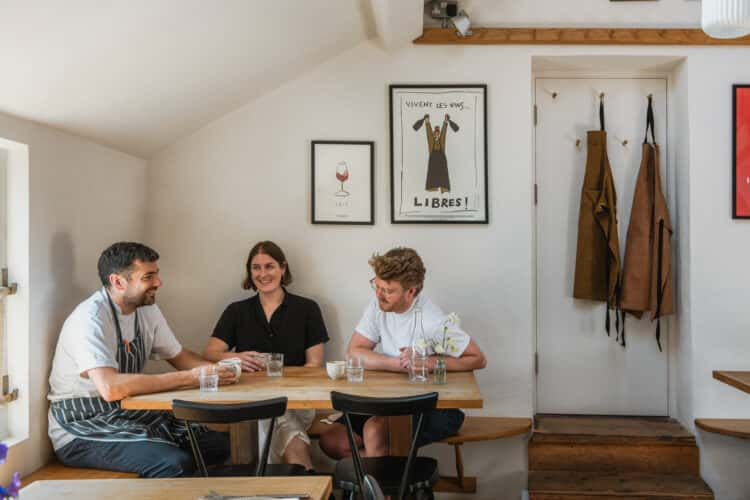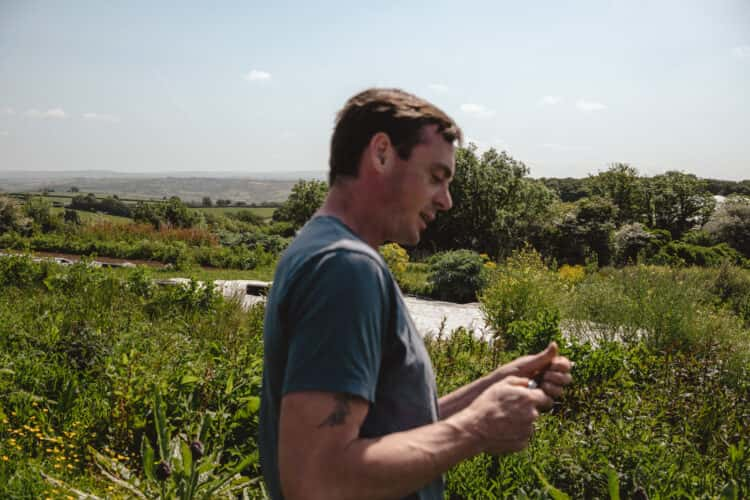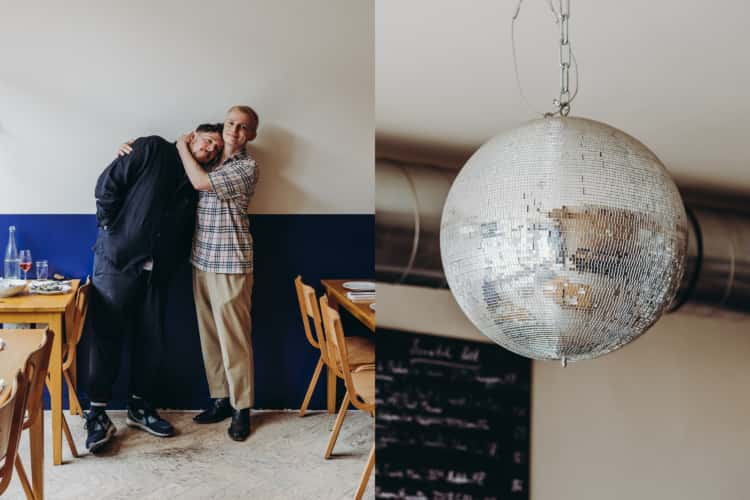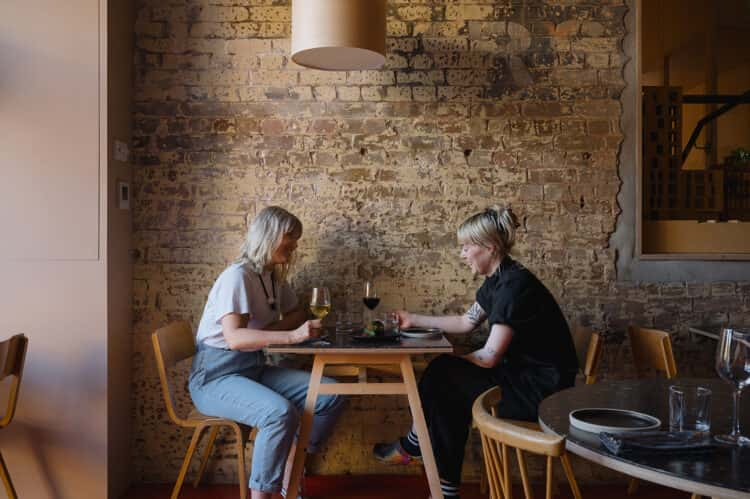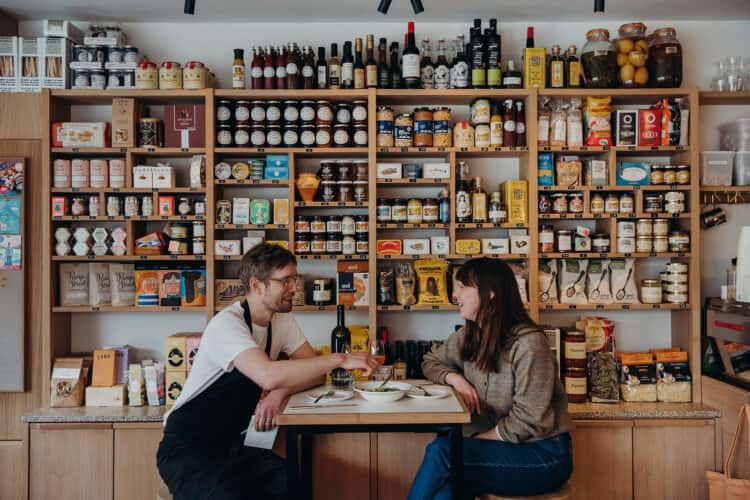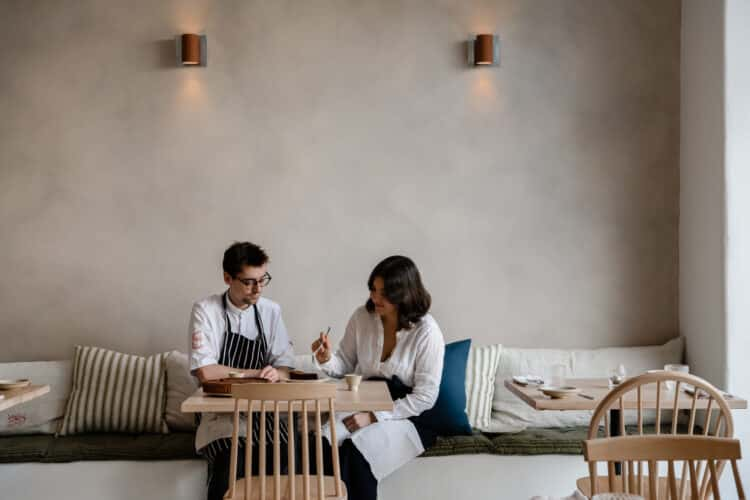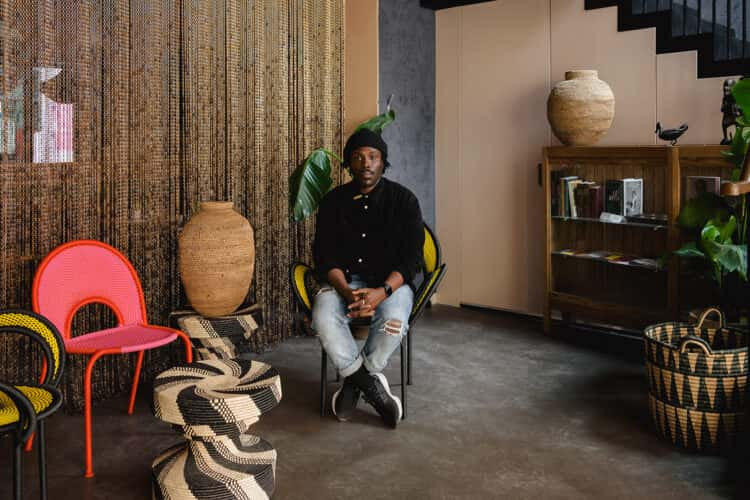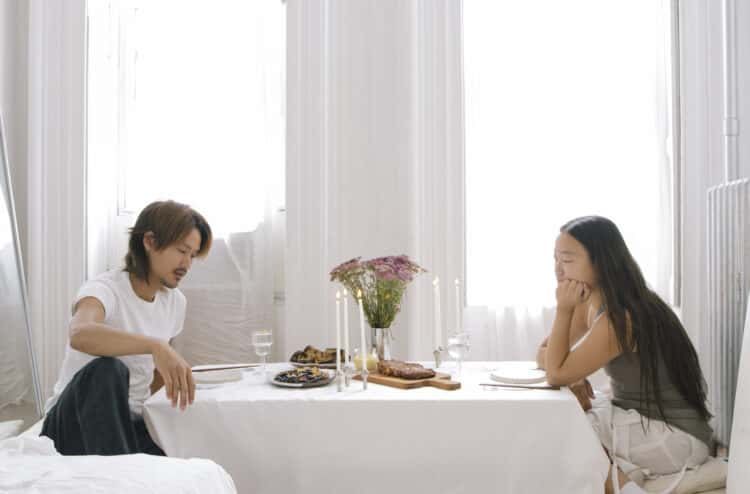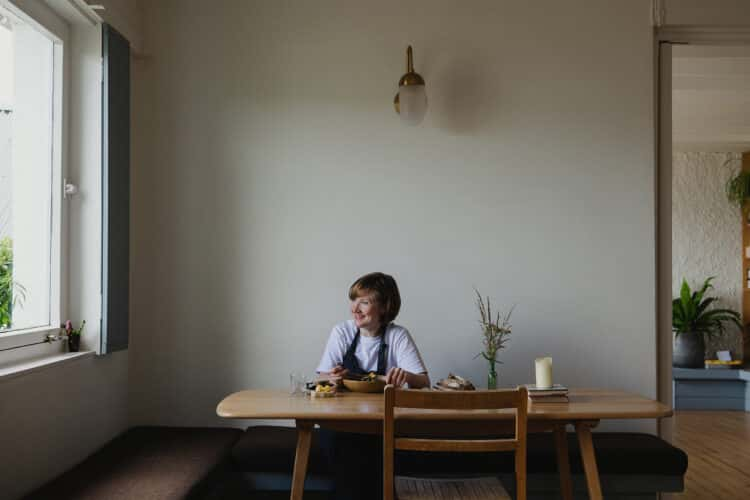Celebrating one year of Planque with founder Jonathan Alphandery and chef Seb Myers in Haggerston, east London
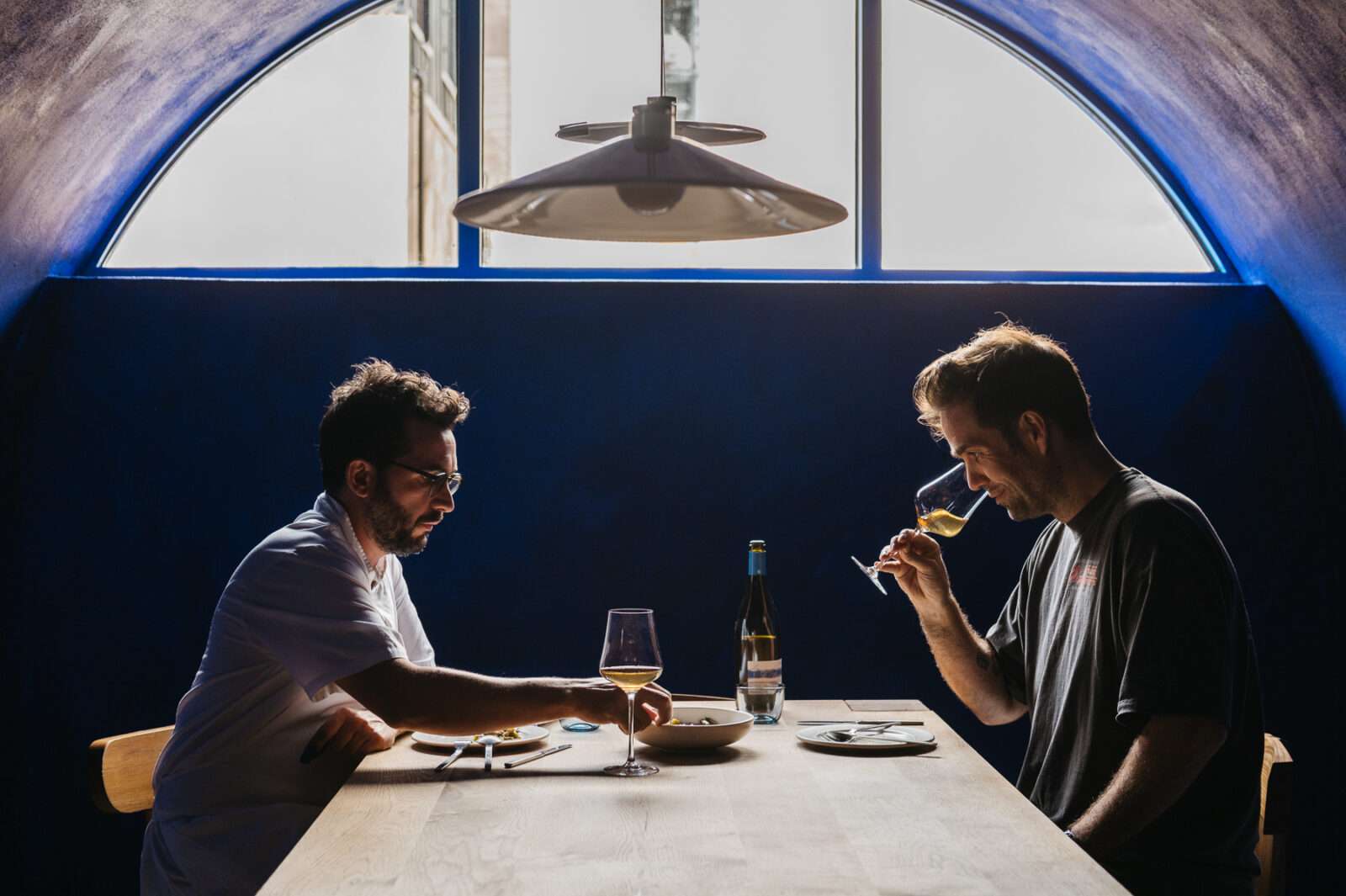
Words Billie Brand
Photography Elliot Sheppard
Production Harry Cave
Three years ago, Jonathan moved to the UK with his wife, art director Bianca, and began to brainstorm a place to best showcase his accumulation of booze. He wanted to create a detail-orientated hideout (Planque’s meaning in French) for guests to drink beautiful wine from equally beautiful glassware. He also envisioned a revolving roster of chefs serving dishes to complement the drinks, but when he met Seb (formerly of P. Franco and Chiltern Firehouse) through a mutual friend, the two clicked and, as Jonathan says, “the food became a much bigger element.” Chilled melon soup with raw cream and trout roe sits alongside fare such as pork-jowl ragoût with braised green beans and walnuts – for which Seb shares a recipe below. Plus, the duo discuss Planque’s first birthday party and tell us why their partnership was meant to be.
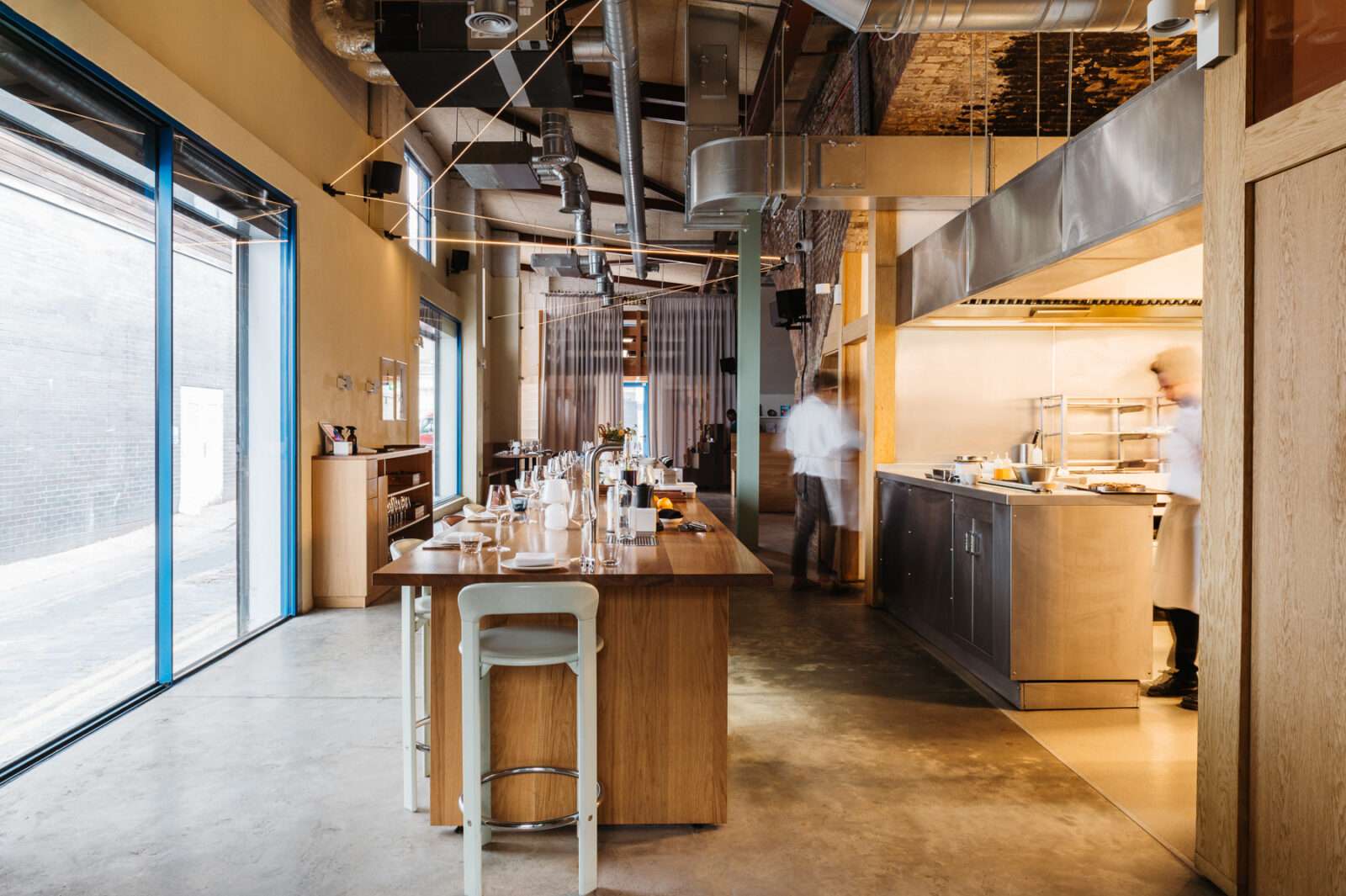
Jonathan: “The last year has been a whirlwind. We’re going to celebrate the anniversary with our friends and the chefs who have supported us. We’re going to invite them over and cook lunch, drink wine and play some music. I took a bit of a shot in the dark with this place. But I love restaurants – in fact, I probably love restaurants more than I do food…”
Seb: “That’s an understatement!”
Jonathan: “…And seeing people use the space and enjoy the wine and food has been great. I grew up in Paris and my mum wasn’t the best home cook – we ate well, lots of vegetables, for example, but cooking just wasn’t her thing. Instead, going to restaurants was a really important part of our lives. Paris has an amazing food scene and I dined at fancy places from a really young age; we’d eat out for special occasions and birthdays. I just took it all in – I loved the sound of the dining room and the ritual of dressing up for dinner, which was much more commonplace then than it is now. I still ask Seb to dress up with me when we go somewhere nice.”
Seb: “He texts me before we go out saying: ‘Make sure you’re wearing a white shirt.’”
Jonathan: “And then we’ll be the smart ones in the whole restaurant. But I love it. Dressing up for dinner is not done enough anymore.”
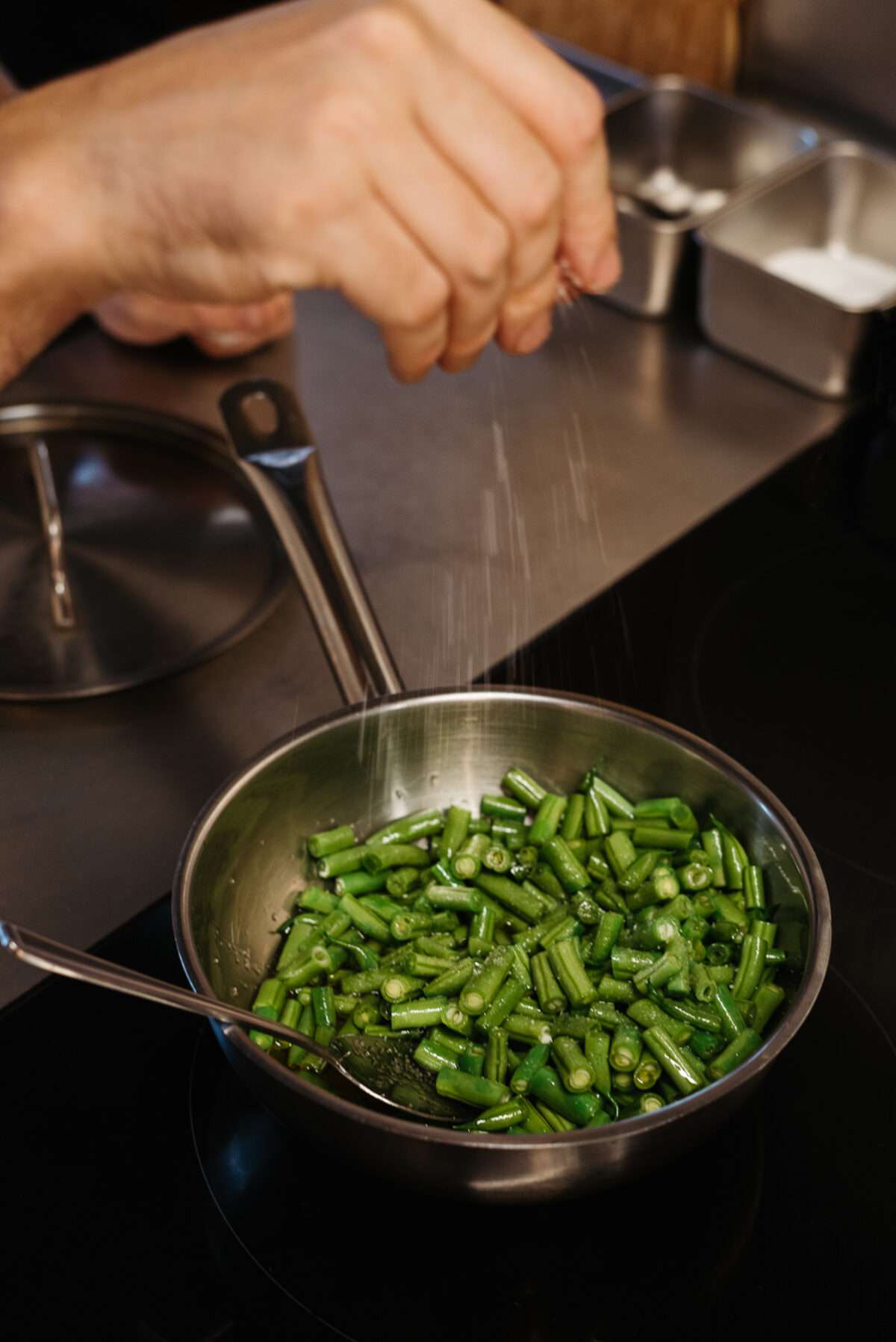
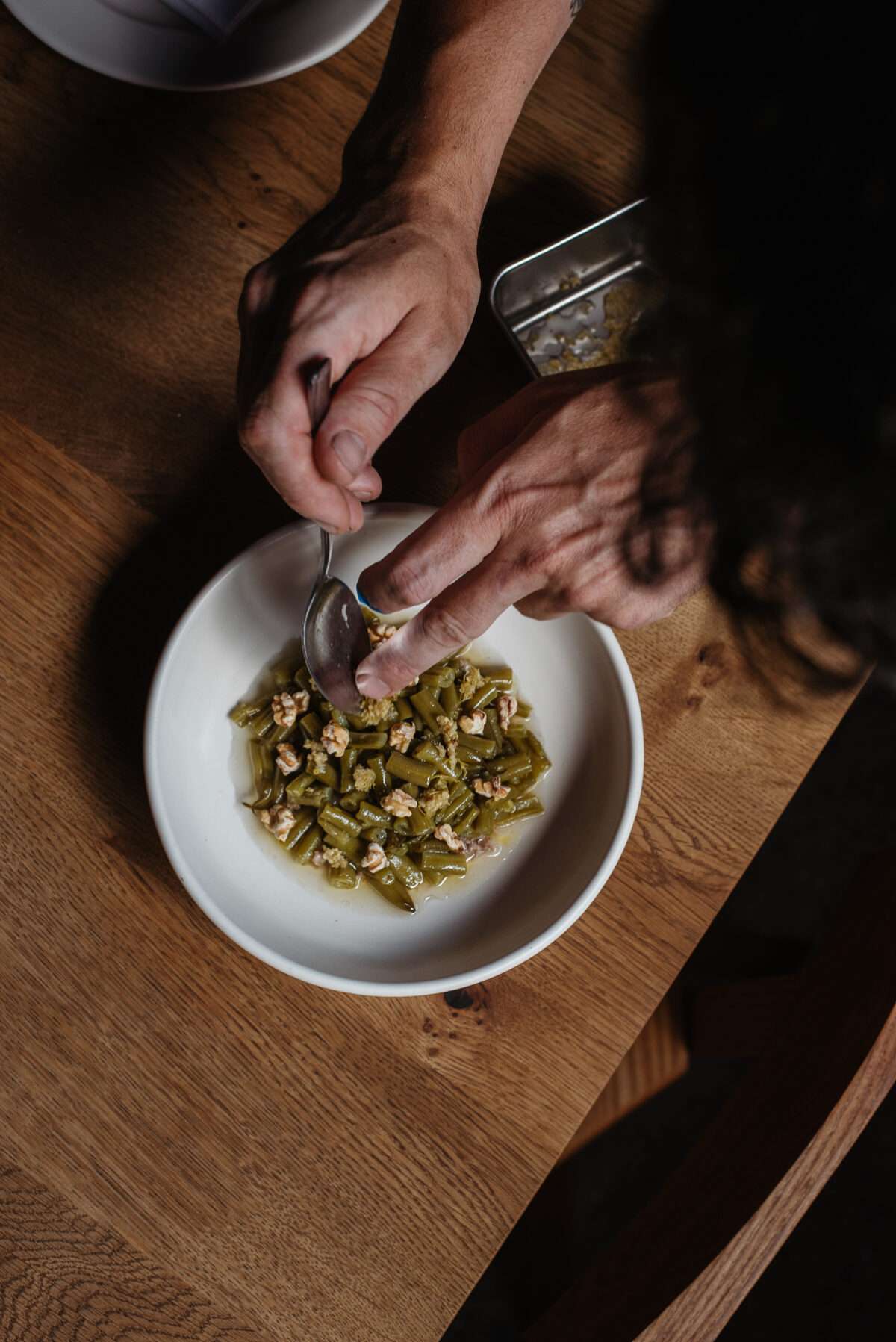
Seb: “My mum and dad worked a lot when I was younger, so my grandma – who’s Spanish – would cook for us and I’d often help her out after school. I’m from a town called Geelong, which is about an hour outside Melbourne, in Australia, but I was eating things that were far from the norm for a lot of Aussie kids. They’d have fish fingers and chips or spaghetti Bolognese, while my grandma would cook croquettes and tortillas. I remember marinating and roasting peppers with her and every year, she’d make wine and jamón. I learned a lot from her.
“There was a large immigrant community in Geelong. Our friends down the road were German and we’d often trade food with them. We’d swap Grandma’s croquettes for German sweets, for example. From then on, I was just always curious about cooking and travelling and trying new things.
“I first came to the UK about 10 years ago, to work with chef Nuno Mendes at Viajante. What’s interesting is that back then he brought me to this very site to look at it to host his next restaurant. So, when Jon – who I met through a mutual friend that also worked for Nuno – gave me this address to view the space, I couldn’t believe it. It was exactly as I remembered it.”
Jonathan: “It felt like it was meant to be. There are a few funny coincidences like that: Seb and I have both lived and worked in Australia and France; we figured out that we would have both been at the same pop-up chicken-shop party in Sydney a few years ago.”
Seb: “Because of our common experience, we have touch points to discuss together. Chances are, we know exactly what references the other is making – whether it’s a restaurant in Paris or one in Sydney.”
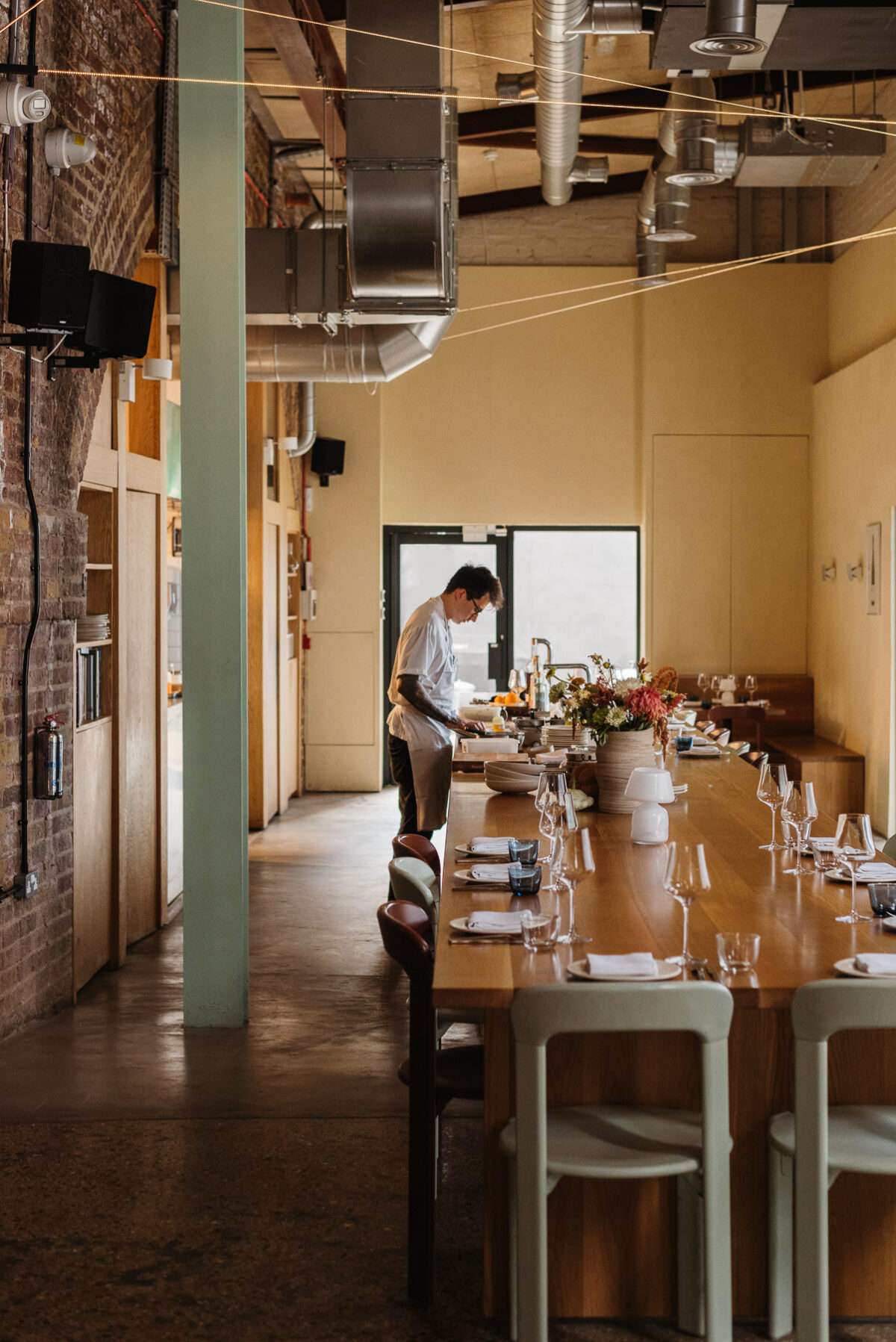
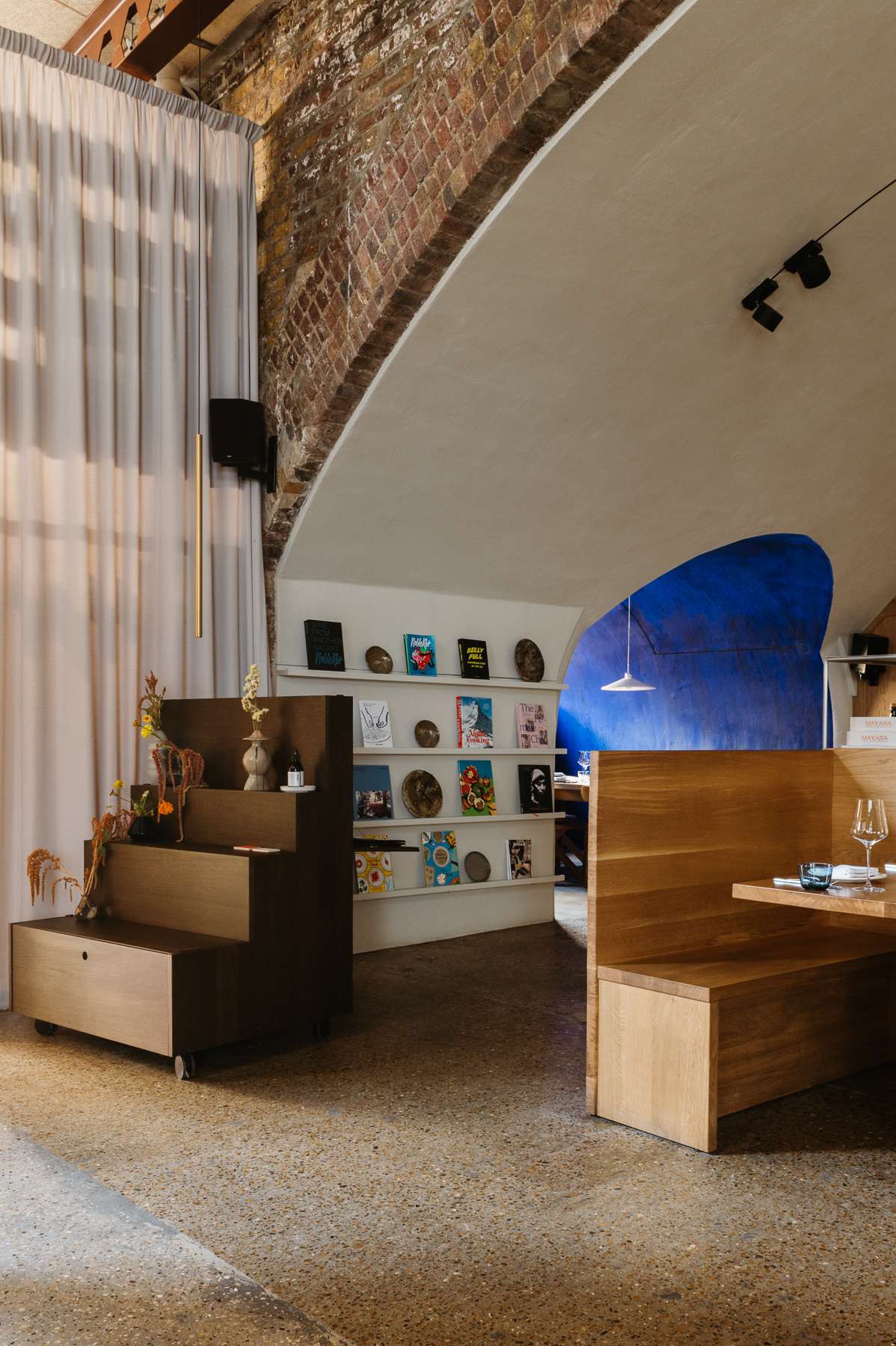
Jonathan: “Before I came to the UK, I’d been spending time in France and Australia buying wine, which I knew I wanted to do something commercial with – I just didn’t know what yet. I spent the pandemic brainstorming all the restaurants and bars I like, taking note of the small things I appreciate about them – and what I could do better. For example, there are places where you eat very well, but the glassware or the temperature of the wine is given a little less thought. At times, I’ve been left thinking: ‘If the restaurant got that right, it would be perfect.’ So I tried to include all of those things under one roof here.
“As a London tourist, I always liked the character that places under railway arches have. This one was formerly used as a garage. The arched space is great for storing large amounts of wine. It has big windows too, which you don’t usually get in venues like this, so it feels very airy. Plus, with the high ceilings, it never feels cramped – even when it’s really busy.
“The Copenhagen-based company Studio X worked on the interior design. We wanted it to feel different to most wine-centric places – definitely not like an old boys’ club. They responded immediately to the space and had a good vision for it. The idea was that it would feel a little bit Scandinavian, but we also wanted to take the space for what it was. We would never try and cover the industrial parts, such as the beams – they’ve been repainted, but they’re pretty much the same colour as they were when we got here. Bianca, my wife, painted the blue alcove herself. It’s become our signature – and it’s very photogenic, which people like.
“There’s a rule in Parisian bistros that when it comes to decorating, the first thing you do is strip everything back – the walls, the floor – because you might just find gold underneath. There are a lot of places there with the most amazing ceilings and incredible mosaic floors that were discovered when doing renovations. So we did exactly that here. The floor we found underneath the old one is really beautiful. Our neighbours couldn’t believe it – they’d just covered theirs in concrete.”
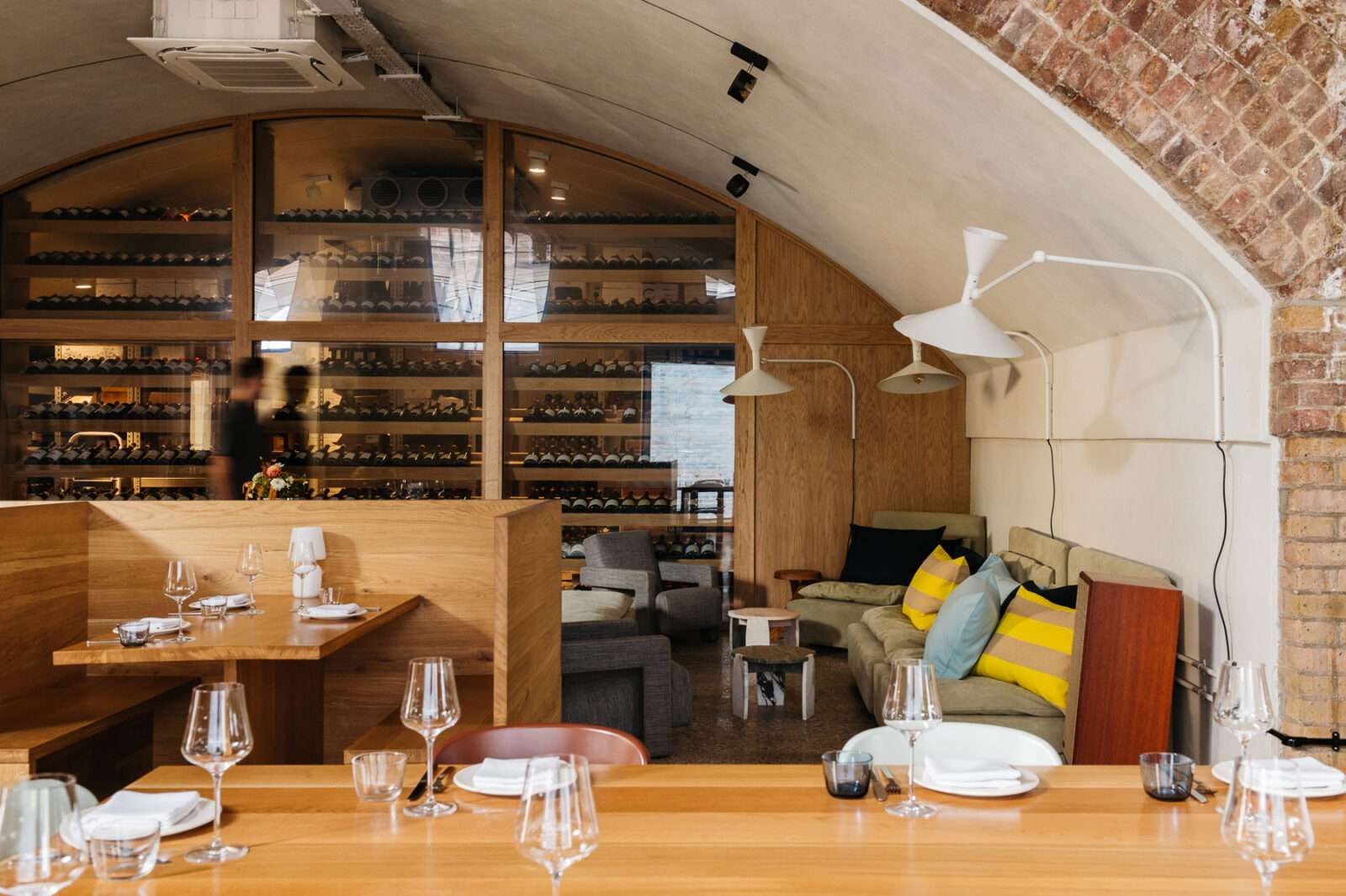
Seb: “It’s important for me to not get too stuck in a rut with cooking here; to keep the momentum going. One of the influences we took from Parisian wine bars and restaurants was to focus on organic produce and small suppliers. The menu naturally flows with the seasons. It’s been interesting to come full circle and start thinking about some of the produce that we were using in the kitchen in September last year.”
Jonathan: “The food is evolving really nicely. If I want to have friends over for dinner, I tend to just bring them here. Then again, I only cook a little bit; Bianca does more than me. She’s pretty much vegetarian – she eats a little bit of fish every now and again – so when we’re at home, we’re very healthy. But that means I can have a bit more fun with my food out of the house. I love going to restaurants like Brawn and Mangal II.”
Seb: “I cooked a lot at home during the pandemic, but as I only have a few nights away from the restaurant each week, I end up eating out a lot – especially as there are always restaurants I want to try. I also love Brawn, while Lyle’s for lunch is always great. And there are very few restaurants with the same energy as Black Axe Mangal.
“At home, my cupboards feel like a well-stocked Asian pantry. Frozen dumplings, a few sauces and some spices always results in a good meal. My tip for home cooks would be to create something similar. Invest in a good larder with high-quality oils, vinegar and condiments. With the right condiments, you can take a dish in a lot of different directions.”
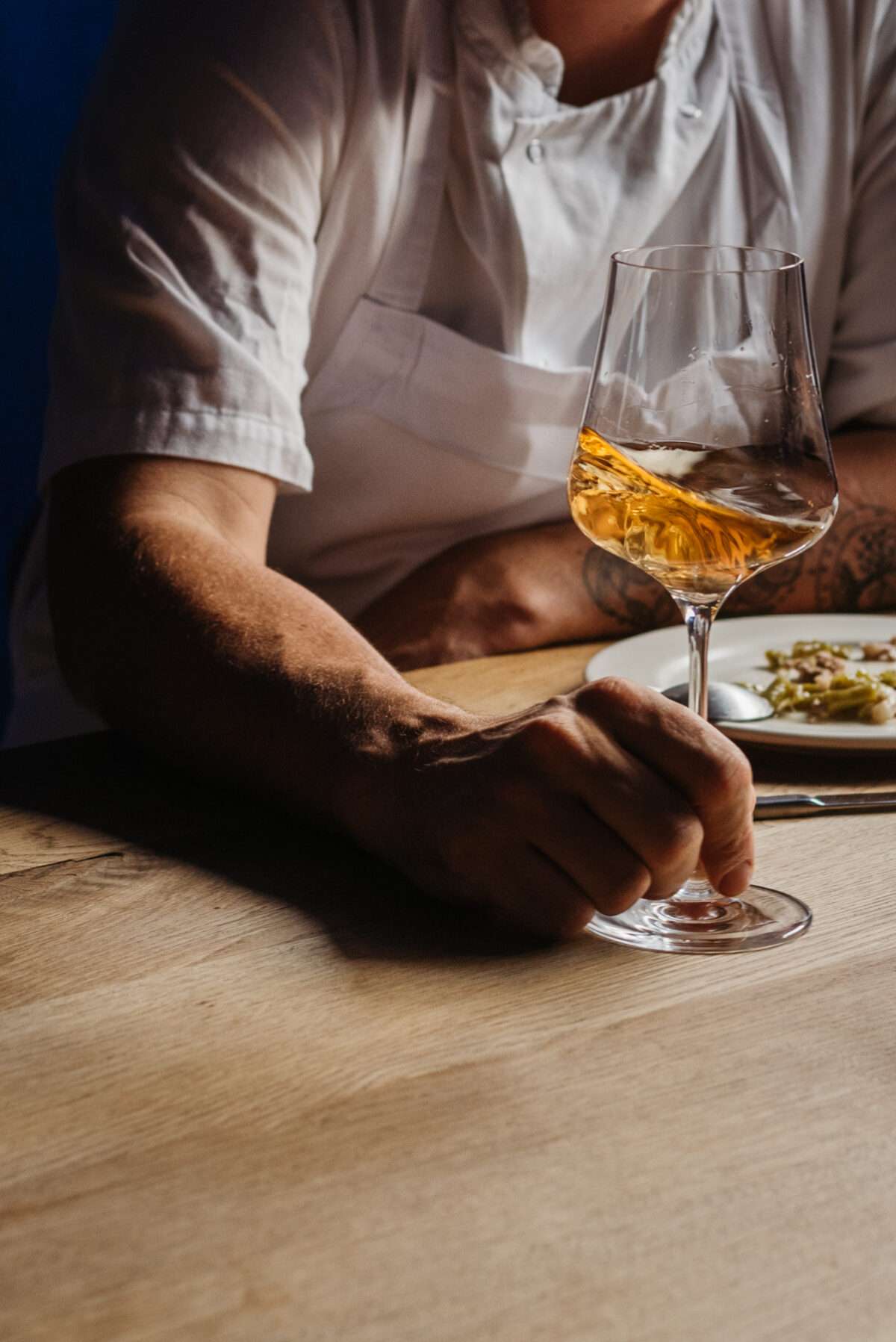
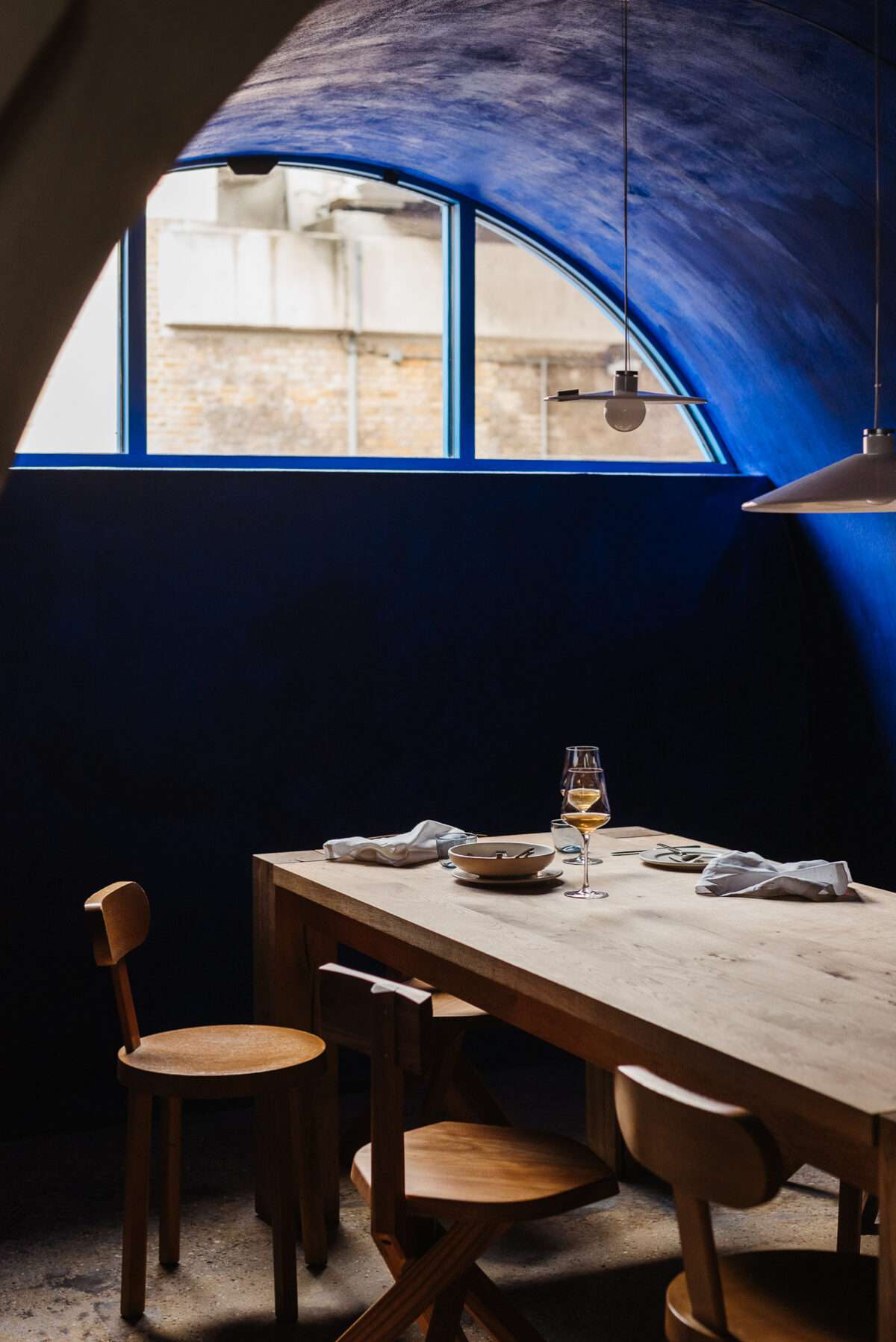
“This dish is rooted in French home cooking, but with a few minor tweaks it can be made into something that really stands out. For example, we use elderflower vinegar, which cuts through the fattiness of the pig fat and pairs nicely with the creamy braised beans. If you can’t source elderflower vinegar, however, it can be substituted for any high-quality chardonnay or organic cider vinegar, depending on your taste.”
Serves two
For the ragoût
10cm2 piece of pork skin
200g pork jowl, coarsely minced
1 small white onion, finely diced
A few tbsp of chicken or pork stock
A few pinches of salt
A few tbsp of elderflower vinegar
For the beans
5-6tbsp olive oil
150g green beans, sliced into 2cm pieces
1 clove garlic, finely grated
Salt
To serve
6 walnuts, roasted with skin off
Virgin walnut oil
Pickled elderflowers from the vinegar (not essential)
Place the pig skin in a medium-sized pot, cover it in cold water and bring to the boil. Once boiled, strain carefully and discard the water. Wash the pig skin well and place in a clean pot, cover with water again and cook until tender for around 2 hours. Once the pig skin is cooked, carefully strain again and allow to cool until it’s cold enough to handle. This can be done the day before cooking the dish and stored in the fridge. Chop the skin into ½-centimetre chunks and set aside.
Next, heat a pan and add the pork jowl. The aim is to render the fat and use that to cook the ragoût. We use jowl for its fat-to-gelatine-to-meat ratio. If you ask your butcher they should be able to grind some for you. Cook the jowl down and break up any clumps that form. Once the meat is starting to cook and break down with no colour add the onion. Cover with a lid and cook on a low heat for around 40 minutes, until the onions are sweet. Add the stock and bring to the boil. Add the chopped pig skin, season with salt and elderflower vinegar and set aside to mellow and come together for around an hour.
Heat the olive oil in a small pot and add the beans. The aim is to braise the beans slowly so they are soft and giving. It’s important to season with a good amount of salt, as this will help to stew the beans in their own liquid. Check them every 5 minutes or so, making sure they’re not sticking to the bottom of the pan. Once they’re tender and olive green in colour, add the garlic and stir well. Cook for another 1-2 minutes and set aside.
To finish, heat up the beans and pork ragoût in their separate pots. Check the seasoning of both again – don’t be afraid of the pork being quite sharp with vinegar, the acidity is needed to cut through the fat of the ragoût. Divide the pork between two bowls and then arrange the beans in a little mound. Drizzle with the walnut oil then break the walnuts and arrange over the top. Add a few pickled elderflower blossoms if your vinegar has them inside.
